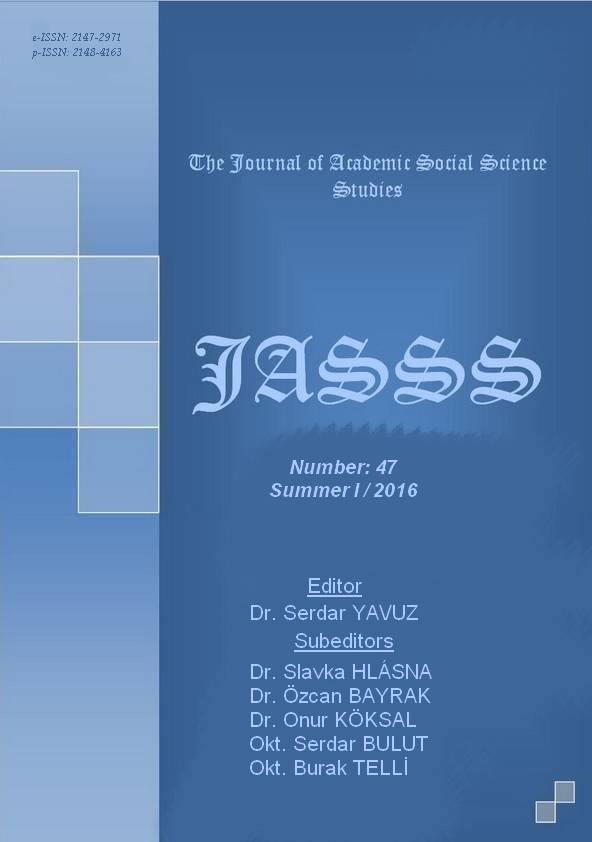ORHON TÜRKÇESİNDE TÜRKÇENİN TEMEL SÖZ SIRASININ EVRİMİNE KANIT BİR GEÇİŞ DÖNEMİ YAPISI: ADILSIL DEVRİKLİK
Author :
Abstract
Sözdizimsel düzlemde, yüklem ardına eklemlenen sözcük ya da öbeklerle oluşturulmuş tümceler, devrik tümce şeklinde adlandırılmaktadır. Günümüz Türkçesinde belirtisiz (unmarked) temel söz sırasının Özne-Nesne-Yüklem biçiminde olduğu kanıksanmış yaygın bir görüş olsa da bu görüşün daha çok yazı temelli olarak şekillendiği ve bu yüzden de tartışmaya oldukça açık olduğu söylenebilir. Nitekim, Sebzecioğlu ve Ekdi’nin (2015) Türkçede devrik tümce ile ilişkili ortaya koydukları çalışmada dil kullanıcılarının hem yazılı hem de sözlü dildeki sezgisel tepkileri ölçülmüş ve sanılanın aksine yüklem-art (devrik) yapıların kullanımında azımsanmayacak bir baskınlık olduğu gözlenmiştir. Bu çalışma, sözü edilen gözlemin Türkçenin artzamanlı görünümleriyle daha belirgin ve kanıtlanabilir olacağı düşüncesi üzerinden biçimlenmiştir. Bir başka ifadeyle, bu çalışmada, Türkçenin tarihsel dönemlerindeki söz sırasının Özne-Nesne-Yüklem olmayabileceğine ya da sonradan bu tür bir sözcük sırasına evrilmiş olabileceğine ilişkin ipuçlarını bulmak üzere yola çıkılmıştır. Bu çalışmanın bütüncesini (corpus) oluşturan metinler Orhon Türkçesi dönemine aittir. Bu dönemin seçilmesinin nedeni, Türkçenin metinlerle takip edilebilen ilk evresi olması ve bundan kaynaklı olarak söz sırasının en erken görünümlerine erişebilmenin kolaylığıdır. Orhon Türkçesine ait bir özellik olarak kişi adıllarının henüz yükleme tam olarak eklemlenmemiş olması (kel-teçi men gibi) bağımsız bir sözcük durumunun işlevsel açıdan olmasa da tözsel olarak devam ettiğini göstermektedir. Bu çalışmaya özgü olarak bu tür yüklem-art dizilim içerisinde değerlendirilebilecek yapılar adılsıl devriklik (pronominal post-predicate) olarak adlandırılmıştır. Orhon Türkçesinde adılsıl devrik yapılarda kişi adılları yüklem çekiminin içerisinde kişi ve sayıları gösterirken ekleşme (dilbilgiselleşme) sürecine henüz girmemiş bulunmaktadır. Bu durum, Türkçenin Özne-Nesne-Yüklem biçiminde olduğu savlanan temel sözcük sırası üzerinde bir soru işareti uyandırmaktadır. Şöyle ki, Orhon Türkçesi dönemi eskicil Nesne-Yüklem-Özne diziliminin unutulmaya yüz tuttuğu, Özne-Nesne-Yüklem diziliminin Türkçedeki yerini artık sağlamlaştırmaya başladığı bir geçiş sürecini yansıtıyor olabilir. İlk Türkçe ya da Ana Türkçe dönemlerine ait herhangi bir metin olmadığı için Nesne-Yüklem-Özne dizilimine ilişkin eskicil bilgiler elimizde bulunmamaktadır. Bütüncenin niceliksel olarak çözümlenmesi sonrasında, Orhon Türkçesinde yer alan devrik yapıların ağırlıklı olar
Keywords
Abstract
On the syntactic platform, inverted sentence is described as sentences structured by adding words after verb or sentenced made up of phrases. Although there is common and inured belief about the contemporary Turkish language that unmarked basic say has the order in Subject-Object-Verb, it is possible consider that this view has been formed more about scripting; and thus, it is rather disputable issue. Hence, it was seen in the study of Sebzecioğlu and Ekdi (2015) about inverted sentence in Turkish that sensual reactions of language users in both verbal and scriptural language were measured and it was observed on the contrary to the presumed that usage of verb-sequel (invert) structures display dominance in considerable amount. The present study was structured on the basis of opinion that aforesaid observation would become more evident and provable with diachronic views of Turkish language. In other words, the present study departed to search for clues which support the view that word order in the ancient periods of Turkish language would not be Subject-Object-Verb or that it could have been evolved into such a word order. The texts compromising corpus of this study belong to Orkhun Turkic period. The reason for preferring this ancient period was that it was the preliminary periods of Turkish language which could be traced by texts and accordingly that it was convenient to access to the earliest forms of word order. As one of the characteristics of the Orkhun Turkic, the fact that personal pronouns were not completely added onto verbs yet (e.g. kel-teçi men) suggests that an independent word status was maintained substantively even though it was not functionally. As characterized with this study, structures which could be considered within this sort of verb-sequel array were referred as pronominal post-predicate. In the pronominal inverted sentences of the Orkhun Turkic, personal pronouns were not introduced into grammaticalisation process while indicating persons and numbers in the verb inflection yet. This situation casts doubt on basic word order claiming that Turkish language has been in order of Subject-Object-Verb. Such that, Orkhun Turkic period could reflect a transition period in which oldish Object-Verb-Subject array started to disappear and Subject-Object-Verb array was strengthening its position in Turkish language. Since there is no any text from the first Turkic or mother Turkic periods, we currently lack of information on oldish Object-Verb-S





